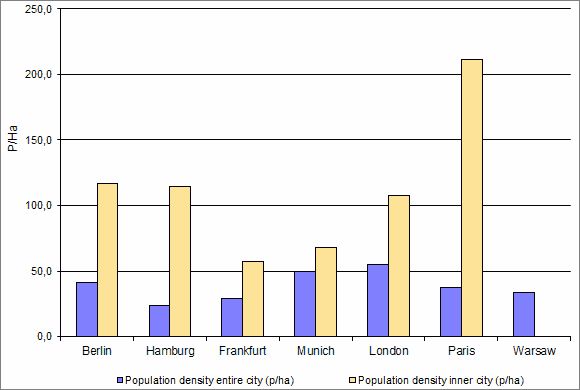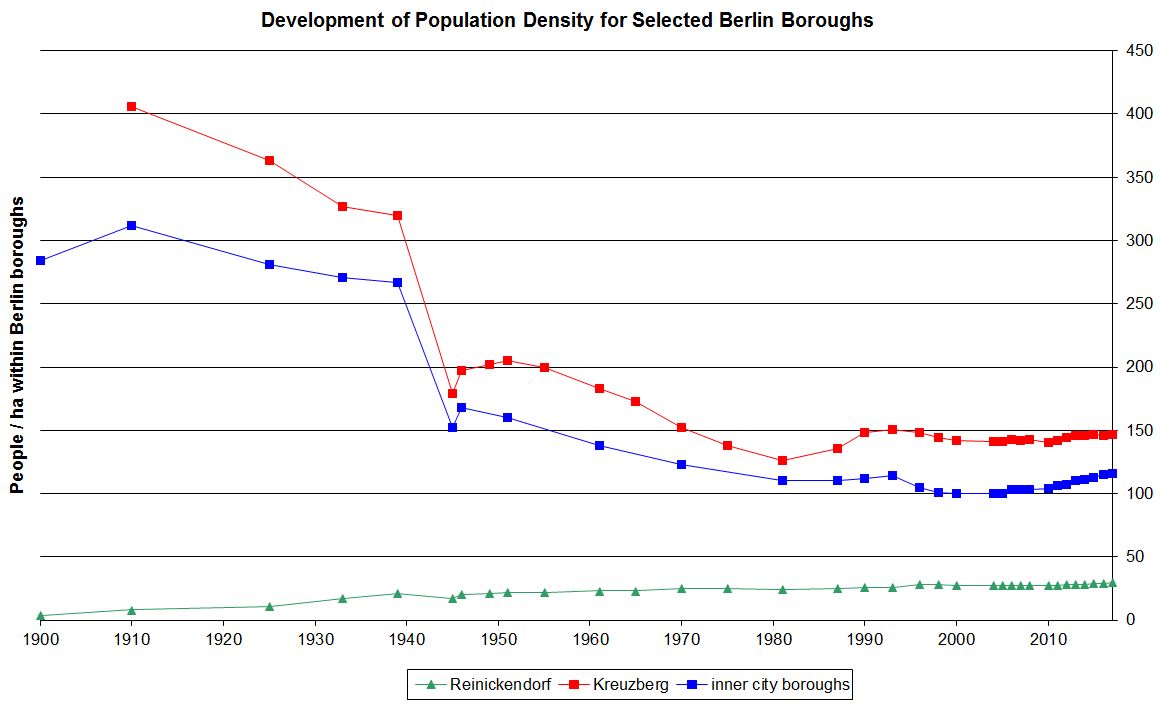The term population density is a measure of how many people live in a given area. Population density as used here is the number of inhabitants per hectare (1 hectare is an area about 86 yards on a side. 1 hectare = 2.47 acres, or 1 acre = 0.4047 hectare. 640 acres = 1 sq. mile). The population density of Berlin’s entire urban area is 42 people/hectare (p/ha). This figure is in the middle range for German and European cities. Hamburg has an average of 39 % fewer people per hectare. In the inner city of Paris, the population density on the same area is almost twice as high. As the city of Paris developed, however, within a limited area of around 105 km2, these numbers are only somewhat comparable (cf. Fig. 1).
Population Density 2018

Fig. 1: Population density of Berlin compared to other cities, in people per hectare (data from 2013-2016)
Image: Umweltatlas Berlin
h6. Data status: Berlin / Munich: 31/12/2016; Hamburg / London: 31/12/2015; Frankfurt: 30/06/2016; Paris: Inner City, Unité urbaine: 01/01/2013; Warsaw: 30/06/2015. See notes on Fig. 2 for definition of Berlin inner city.
In Paris, the inner city and the municipal border of the city area overlap. For comparison purposes with the other urban areas, the geographical unit “Unité urbaine”, encompassing 10,601,122 inhabitants on 2,845 km², is used as a reference value for the entire city.
Fig. 2: Development of population density for selected Berlin boroughs (people/hectare within Berlin boroughs), as of December 31, 2018
Image: Umweltatlas Berlin
h6. For the years 1871 and 1900, only aggregated population numbers were available for the inner city boroughs. Between 1949 and 1975, no population data was available for the eastern city boroughs. Hence, the population density of the inner city boroughs could not be determined for these years.

